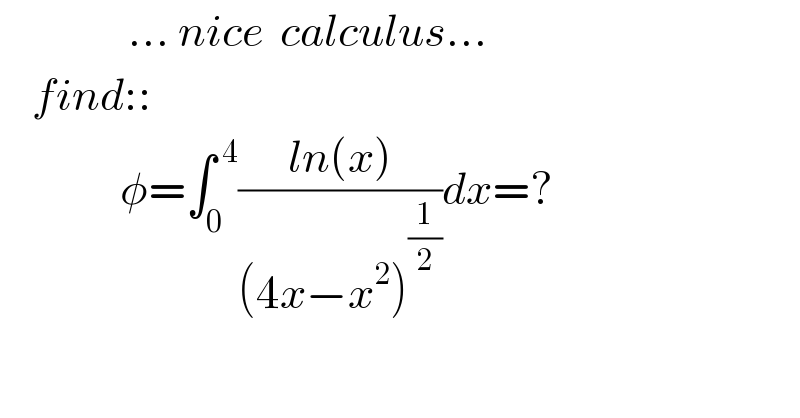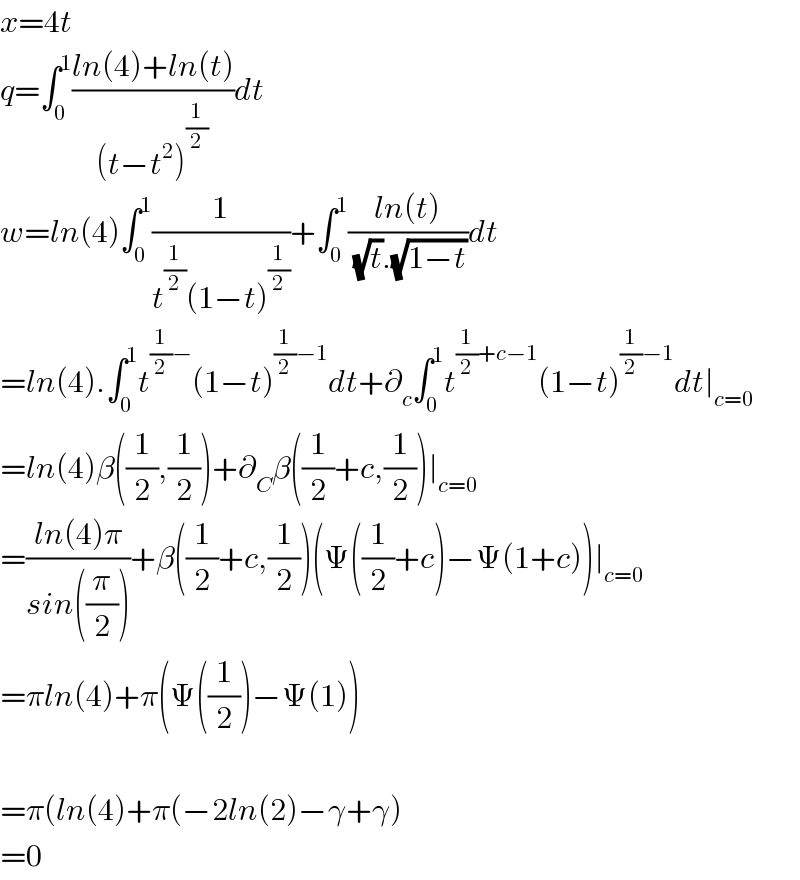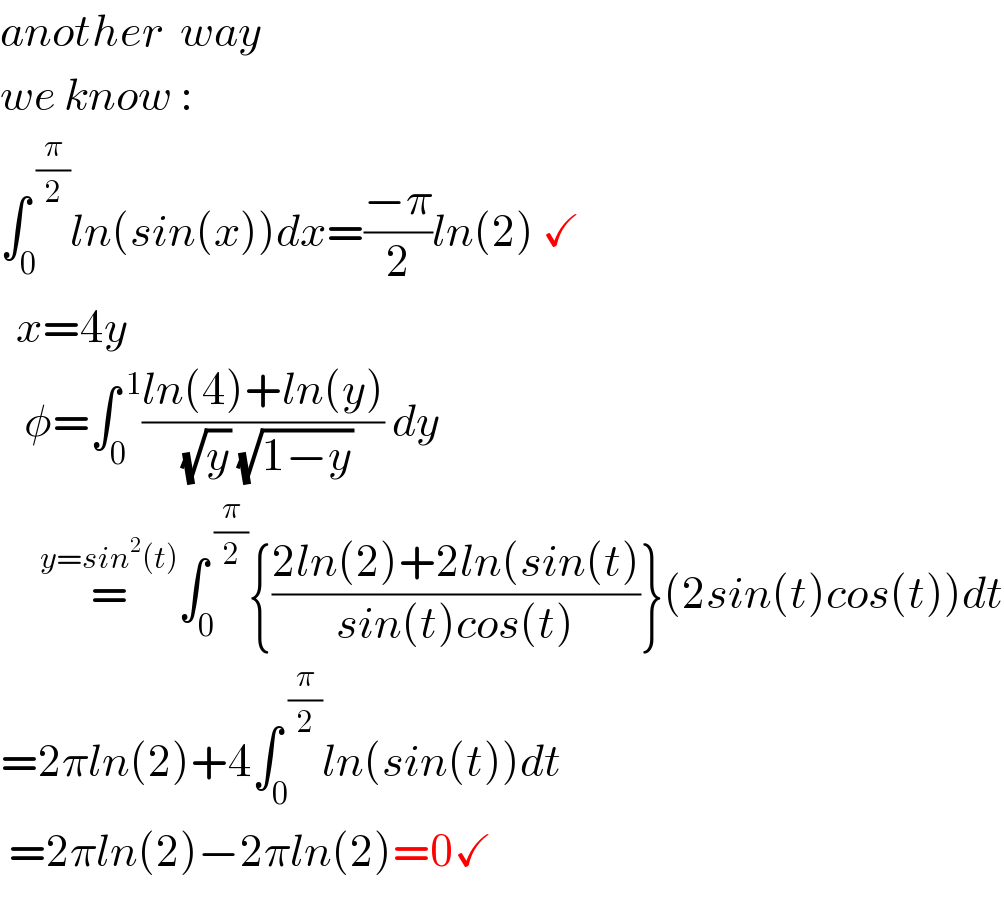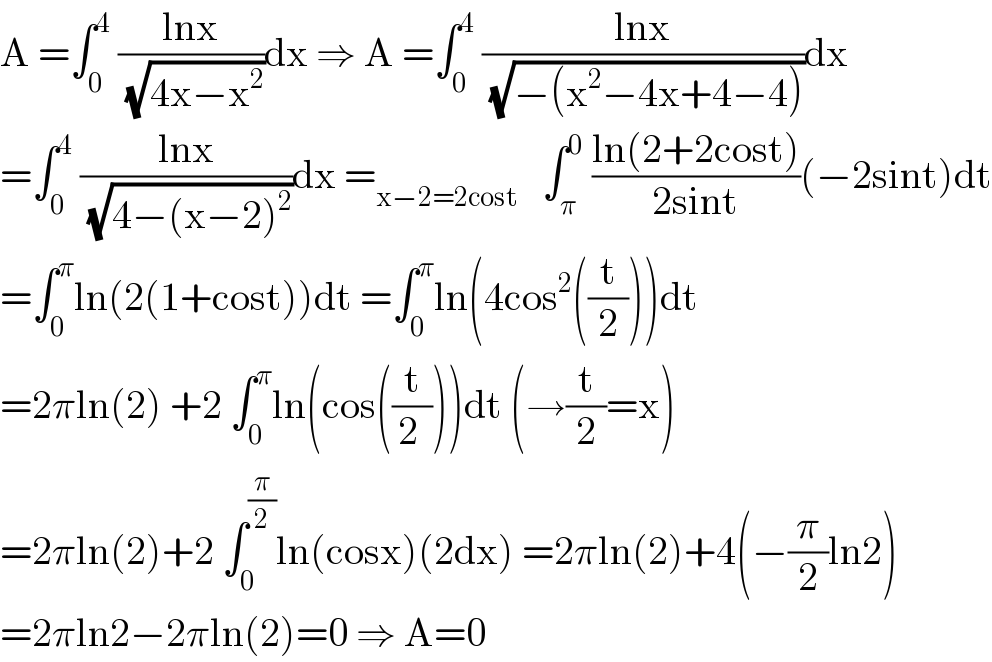
Question and Answers Forum
Question Number 124432 by mnjuly1970 last updated on 03/Dec/20

Answered by mindispower last updated on 03/Dec/20

Commented by mnjuly1970 last updated on 03/Dec/20

Commented by mindispower last updated on 05/Dec/20

Answered by mnjuly1970 last updated on 03/Dec/20

Answered by mathmax by abdo last updated on 03/Dec/20

Commented by mnjuly1970 last updated on 03/Dec/20

